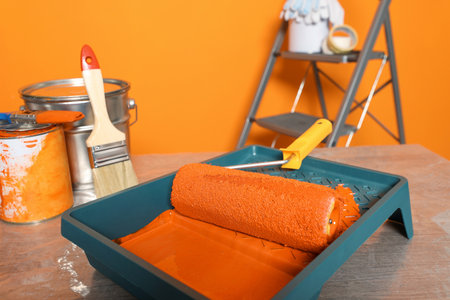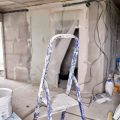1. Assess Your Bathroom Needs and Style
Before you start picking out faucets, tiles, or vanities, it’s crucial to take a step back and evaluate what you and your family really need from your bathroom remodel. Start by thinking about who will be using the space most often. Is this a high-traffic family bathroom, a guest powder room, or a private master bath retreat? Consider how many people will use the bathroom daily and what their routines look like—this will help determine the type of fixtures and finishes that are both functional and durable.
Next, consider the main purpose of the bathroom. For example, a kid’s bathroom may require easy-to-clean surfaces and sturdy hardware, while a master bath might prioritize luxury features like rainfall showerheads or double sinks. Identifying these priorities will help you narrow down options as you shop.
Finally, reflect on your preferred design style. Are you drawn to clean modern lines, cozy farmhouse vibes, or perhaps a classic traditional look? Browsing platforms like Pinterest or Instagram can help you collect inspiration and pinpoint the colors, textures, and materials that resonate with you. By understanding both your practical needs and your aesthetic preferences from the start, you’ll set a solid foundation for making fixture and finish choices that fit seamlessly into your remodeled bathroom.
2. Pick the Right Faucets and Showerheads
When remodeling your bathroom, selecting the right faucets and showerheads is key to achieving both functionality and style. American-standard brands offer a wide range of options that cater to diverse tastes and practical needs. Before making your choice, consider these important factors:
Water Efficiency
Modern faucets and showerheads often come with WaterSense certification, which means they use at least 20% less water than standard models—helping you save money on utilities while supporting sustainability. Look for flow rates measured in gallons per minute (GPM) to ensure youre choosing an eco-friendly option.
| Fixture Type | Standard Flow Rate | Water-Efficient Flow Rate |
|---|---|---|
| Faucet | 2.2 GPM | 1.5 GPM or less |
| Showerhead | 2.5 GPM | 2.0 GPM or less |
Durability and Material Choices
The durability of your fixtures largely depends on the material used. Brass and stainless steel are popular choices in American homes due to their corrosion resistance and long-lasting performance. Make sure any finish you select—such as chrome, brushed nickel, or matte black—is designed to resist tarnishing and water spots, especially if you have hard water in your area.
Matching Your Style
Your faucet and showerhead should complement your overall bathroom design. Whether you prefer a classic look with cross handles and vintage curves, or a modern vibe with clean lines and touchless features, theres a fixture for every taste. Popular finishes in the U.S. include polished chrome for a timeless shine, brushed nickel for a soft, contemporary feel, and oil-rubbed bronze for a rustic touch.
Finish Comparison Table
| Finish Type | Aesthetic Appeal | Maintenance Level |
|---|---|---|
| Polished Chrome | Sleek & Timeless | Low; shows fingerprints |
| Brushed Nickel | Soft & Modern | Very Low; hides smudges |
| Oil-Rubbed Bronze | Warm & Rustic | Medium; may patina over time |
Pro Tip:
If you’re going for a cohesive look, try to match all metal finishes—faucets, showerheads, towel bars, and cabinet hardware—for a unified appearance that feels intentional and polished.
![]()
3. Select Functional and Stylish Sinks and Vanities
Choosing the right sinks and vanities is a key step in creating a bathroom that’s both practical and visually appealing. When remodeling, it’s essential to consider not just the look but also how these fixtures will meet your daily needs. First, think about the size of your space. In smaller bathrooms, a pedestal sink or wall-mounted vanity can free up valuable floor area and give the room an open feel. For larger bathrooms, double vanities offer extra storage and allow more than one person to get ready at the same time—a big plus for busy households.
Storage is another crucial factor. If you have a lot of toiletries, hair tools, or towels, look for vanities with deep drawers, built-in organizers, or even pull-out shelves. This keeps clutter off your counters and makes your morning routine smoother. In terms of style, American homeowners often lean toward clean lines and neutral finishes like white, gray, or espresso wood for a timeless look. However, if you want to add personality, consider unique vessel sinks or bold cabinet hardware.
Don’t forget to choose materials that can handle moisture and daily use—think quartz or granite countertops, solid wood cabinetry with water-resistant finishes, and ceramic or porcelain sinks. Lastly, pay attention to faucet compatibility; make sure the sink you select matches the type of faucet you want (single-hole, widespread, etc.), as this impacts both installation and design cohesion. By balancing function with style and focusing on durable materials, you’ll end up with a bathroom vanity area that elevates your remodel while making everyday life easier.
4. Choose Toilets for Comfort and Performance
When it comes to remodeling your bathroom, selecting the right toilet is about more than just looks—it’s about comfort, efficiency, and long-term satisfaction. Americans spend a surprising amount of time in the bathroom, so picking a toilet that meets both your needs and preferences is essential. Here are some key factors to consider:
Flushing Technology
Modern toilets offer advanced flushing systems that provide powerful performance while conserving water. Consider whether you want a single-flush or dual-flush system. Dual-flush models allow you to choose between a full or half flush, saving water with every use. Pressure-assisted flushing is another option for those seeking extra power and clog prevention.
Comfort Height vs. Standard Height
Toilet height can make a big difference in comfort, especially for older adults or anyone with mobility challenges. Comfort height toilets (sometimes called “right height” or ADA-compliant) are typically 17 to 19 inches from floor to seat—about two inches taller than standard models. This makes sitting down and standing up much easier.
| Feature | Standard Height | Comfort Height |
|---|---|---|
| Seat Height | 15-16 inches | 17-19 inches |
| Best For | Younger users, kids | Seniors, tall individuals, those with mobility issues |
| ADA Compliant? | No | Yes (typically) |
Eco-Friendly Options
If sustainability is important to you, look for WaterSense-labeled toilets. These models meet EPA standards for water efficiency by using less than 1.28 gallons per flush without sacrificing performance. Not only do they help conserve water, but they can also save you money on utility bills over time.
Other Features Worth Considering
- Bowl Shape: Elongated bowls provide extra comfort compared to round bowls but may require more space.
- One-Piece vs. Two-Piece: One-piece toilets have a sleeker look and are easier to clean, while two-piece models tend to be more affordable and easier to transport.
- Soft-Close Seats: Prevent slamming and offer a quieter experience—ideal for busy households.
Pro Tip:
If youre planning a universal or aging-in-place design, prioritize comfort height and easy-to-clean surfaces to ensure your new bathroom remains accessible for years to come.
5. Decide on Bathtubs and Showers
When it comes to remodeling your bathroom, one of the most important decisions youll make is choosing between a bathtub, a shower, or a combination of both. In American homes, preferences often reflect lifestyle needs, available space, and even regional trends. For instance, many busy families and professionals favor walk-in showers for their modern look and convenience, while others see a soaking tub as an essential spot for relaxation after a long day.
Consider Your Daily Routine
If you start your mornings with a quick rinse, a spacious shower with features like a rainfall head or built-in bench might fit your routine best. On the other hand, if you enjoy unwinding in the evening, a deep bathtub could be worth the investment.
Evaluate Space Constraints
In many American homes—especially in urban settings—bathrooms can be compact. A sleek walk-in shower can maximize floor space and create an open feel. However, if you have more square footage, you might opt for a separate tub and shower setup for ultimate flexibility.
Weigh Resale Value and Accessibility
Think about the future: bathtubs are often considered essential for families with young children and can positively impact resale value. Showers with low thresholds or curbless entry points are increasingly popular for their accessibility benefits, making them appealing for aging in place or multigenerational households.
Choose Features That Match Your Style
From freestanding tubs that make a bold statement to glass-enclosed showers with custom tilework, your choice should reflect your personal taste as well as practical needs. Don’t forget about water efficiency—modern fixtures can help conserve resources without sacrificing comfort.
Ultimately, deciding between bathtubs and showers comes down to what works best for your lifestyle. By considering American trends and your own preferences, you can select fixtures that enhance both the beauty and functionality of your remodeled bathroom.
6. Pick Lasting and Trendy Finishes
When it comes to bathroom remodels, choosing the right finishes for your fixtures, hardware, and accessories is key to creating a space that feels both stylish and timeless. The finish you select can dramatically influence the overall vibe of your bathroom—whether you’re aiming for a modern spa-like retreat or a classic, cozy haven. For a cohesive look, try to coordinate the finishes on faucets, showerheads, cabinet pulls, towel bars, and even light fixtures. Brushed nickel remains a popular choice because of its durability and subtle shine that hides fingerprints and water spots. If you want a trendy but still versatile option, matte black is making waves in American bathrooms for its bold yet clean appearance. For those who crave a touch of luxury, polished brass or warm gold finishes add instant glamour without feeling dated when paired with neutral tiles or paint colors.
Don’t forget about mixing metals—a well-balanced blend of two different finishes can add visual interest and depth to your bathroom design while still feeling unified. Just be careful not to overdo it; stick to one main finish and use another as an accent. When selecting finishes, consider how easy they are to maintain and whether they’ll stand up to daily use by your family. Ultimately, choose finishes that not only complement your personal style but will also remain appealing as trends evolve. With these tips in mind, you’ll create a bathroom that feels current yet stands the test of time.
7. Consider Budget, Maintenance, and Installation
When remodeling your bathroom, it’s easy to get swept away by gorgeous fixtures and high-end finishes. However, balancing style with practicality is essential for a successful project. Start by setting a clear budget for your remodel—factor in not just the cost of the fixtures and finishes themselves, but also any extra expenses for professional installation or necessary plumbing updates. While it’s tempting to go all-out on luxurious items, remember that some materials require more upkeep than others. For example, natural stone surfaces are beautiful but may need regular sealing and special cleaning products, while porcelain or ceramic options offer similar looks with less maintenance. Durability should also influence your choices: opt for finishes that resist tarnishing, water spots, and fingerprints to keep your bathroom looking fresh with minimal effort.
Don’t overlook installation demands. Even the most stylish faucet or lighting fixture can become a headache if it’s complicated to install or incompatible with your existing plumbing or electrical setup. Choosing easy-to-install fixtures not only saves time and labor costs but also reduces the risk of future issues. Look for products labeled as “DIY-friendly” or “universal fit,” and always check manufacturer recommendations before making a purchase. By keeping an eye on your budget, selecting low-maintenance finishes, and prioritizing straightforward installation, you’ll create a bathroom that’s as practical as it is beautiful—ensuring your new space stands the test of time without breaking the bank.


